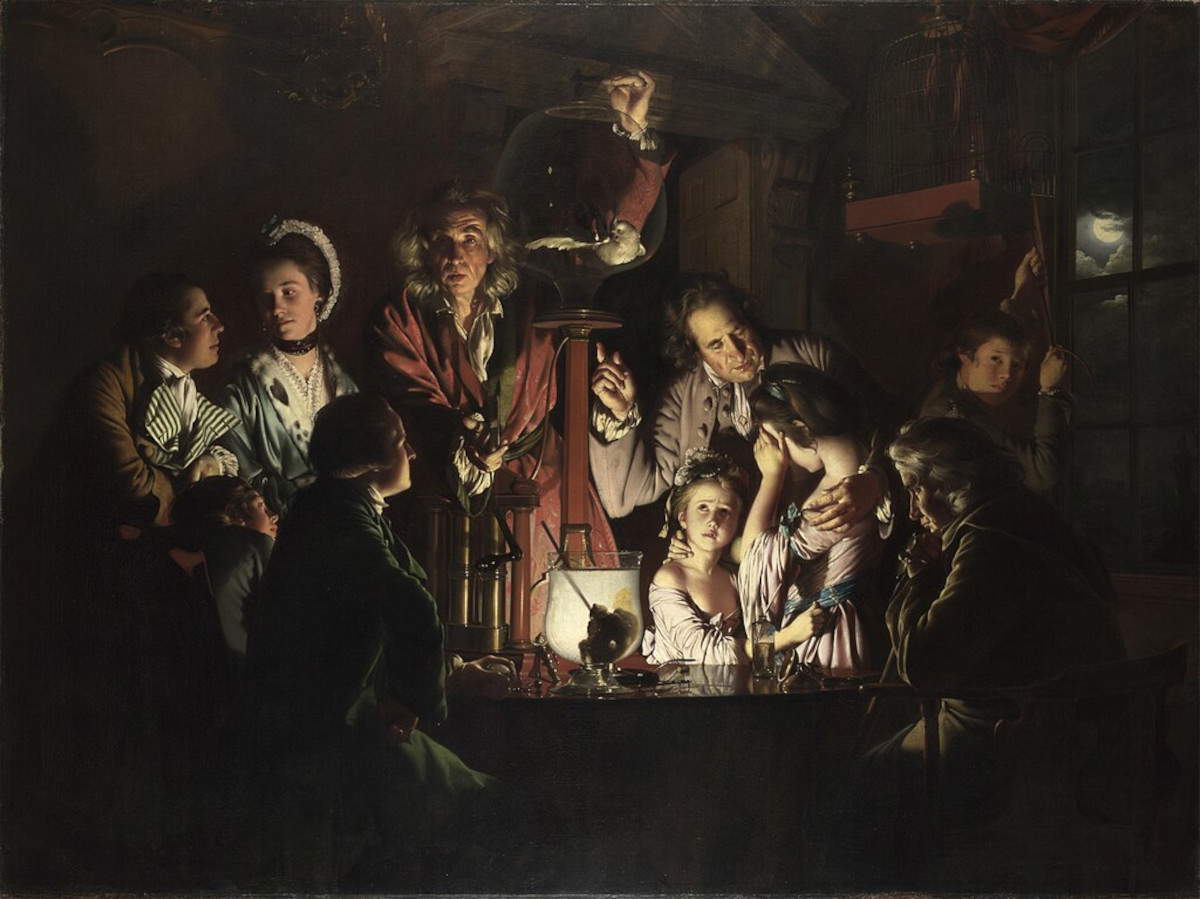From November 7, 2025 to May 10, 2026, the National Gallery in London will present Wright of Derby: From the Shadows, its first major exhibition devoted entirely to Joseph Wright of Derby. The exhibition, focusing on the famous series of “candlelight” paintings, is produced in collaboration with the Derby Museums, where it will arrive in 2026.
Following on the heels of recent exhibitions such as Turner on Tour (2022) and Discover Constable & The Hay Wain (2024), the exhibition aims to highlight a key figure in British painting whose work has become symbolic of an entire era. Traditionally identified as an Enlightenment painter, Wright of Derby has been seen primarily as an interpreter of light. Instead, the exhibition offers a renewed reading, highlighting his interest in darkness and night, through which he addresses deep themes such as death, melancholy, morality, skepticism and the sublime.
The exhibition will focus on the period 1765-1773, during which the painter created his most famous works by candlelight. Masterpieces such as Three People Observe the Gladiator by Candlelight (1765, private collection), A Philosopher Lectures on the Planetarium in which a lamp is put in the place of the sun (1766, Derby Museums) and Experiment on a Bird in the Air Pump (1768, National Gallery) will be brought together. For the first time in 35 years these canvases will be exhibited together, side by side with An Academy by Lamplight (1769, Yale Center for British Art, USA), which has not been seen in the UK for more than a decade.
In these paintings, Wright of Derby captures moments of intense collective participation: scenes of learning and discovery in which light, natural or artificial, becomes the protagonist. His compositions, with strong chiaroscuro contrasts, harken back to the Renaissance tradition and artists such as Caravaggio, but introduce a new sensibility to British art of the time.
At the same time, the artist reflects on issues central to Enlightenment philosophers related to observation, knowledge, and scientific education. In the famous Experiment on a Bird in the Pneumatic Pump, for example, the viewer witnesses the emotional tension of an audience that oscillates between wonder and disturbance. In L’Orrery, a philosopher illustrates the workings of the universe with a planetary model, while in Three People Observe the Gladiator by Candlelight a drawing of the sculpture becomes an occasion for critical reflection.
The artist thus stands at the center of a new cultural season, in which the practice of public exhibitions and annual art shows takes shape. The Air Pump was completed in the same year as the founding of the Royal Academy and conceived for a wide audience; it was then presented to the Society of Artists. The exhibition also documents Wright of Derby’s critical fortune through mezzotint prints, which helped spread his work internationally.
Alongside the paintings, visitors will be able to admire original eighteenth-century scientific instruments, including a planetarium and an air pump, on loan from the Whipple Museum of the History of Science in Cambridge, which will help to better understand the intellectual context in which Wright worked.
Thus, a total of more than 20 works, including paintings, works on paper and objects, will be on display to delve deeper into the artist’s output and the scientific and cultural context of his time. Seventeen works come from the Derby Museums, which hold the world’s largest collection of Wright of Derby’s work. In 2026, the exhibition will come to the Derby Museum and Art Gallery, bringing two of his most famous canvases, The Air Pump and The Orrery, back to the artist’s hometown for the first time in 80 years.
The exhibition is organized by the National Gallery in collaboration with Derby Museums.
Joseph Wright of Derby, An Experiment on a Bird in the Air Pump (1768; oil on canvas, 183 x 244 cm) © The National Gallery, London
 |
| The National Gallery in London dedicates an exhibition to Joseph Wright of Derby and his candlelight paintings |
Warning: the translation into English of the original Italian article was created using automatic tools. We undertake to review all articles, but we do not guarantee the total absence of inaccuracies in the translation due to the program. You can find the original by clicking on the ITA button. If you find any mistake,please contact us.